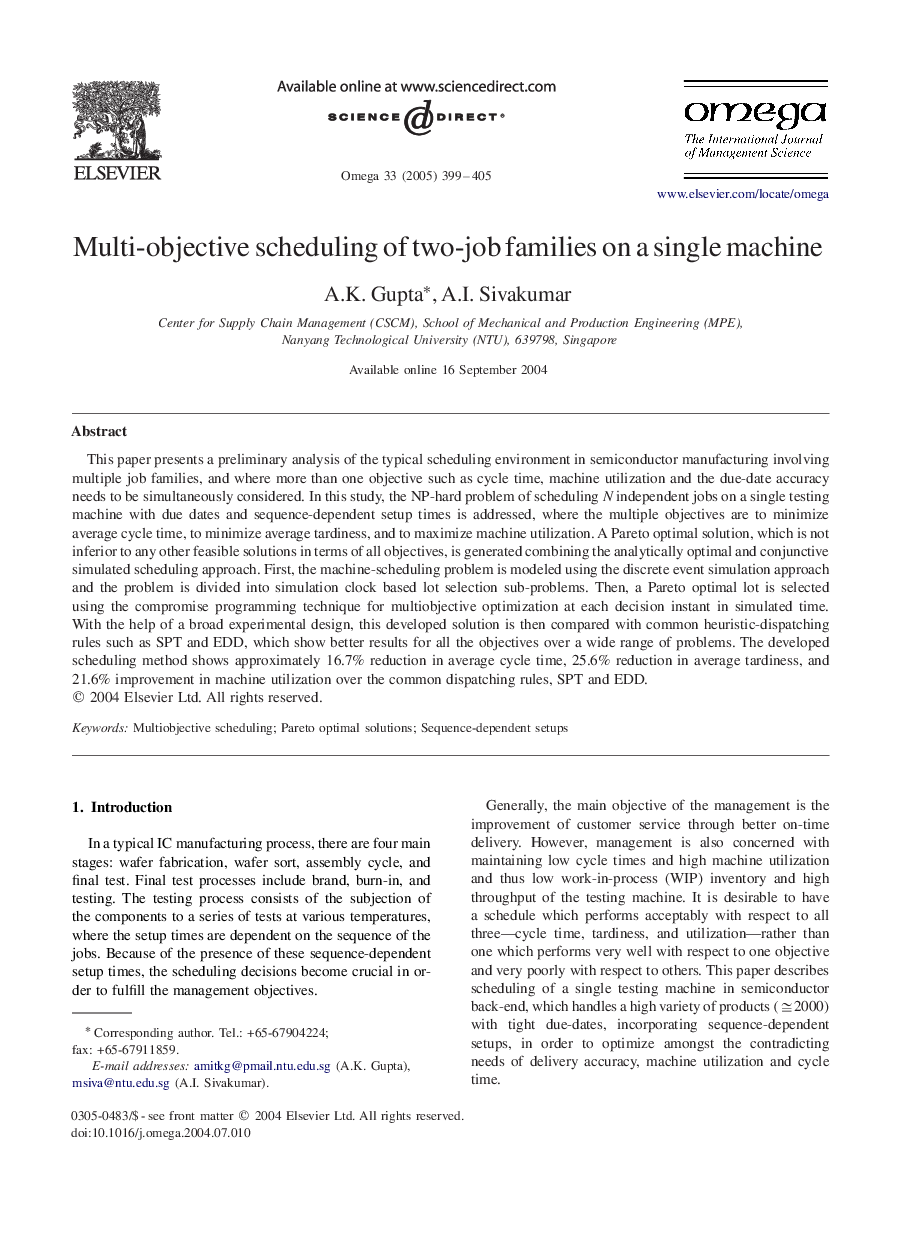| Article ID | Journal | Published Year | Pages | File Type |
|---|---|---|---|---|
| 10498155 | Omega | 2005 | 7 Pages |
Abstract
This paper presents a preliminary analysis of the typical scheduling environment in semiconductor manufacturing involving multiple job families, and where more than one objective such as cycle time, machine utilization and the due-date accuracy needs to be simultaneously considered. In this study, the NP-hard problem of scheduling N independent jobs on a single testing machine with due dates and sequence-dependent setup times is addressed, where the multiple objectives are to minimize average cycle time, to minimize average tardiness, and to maximize machine utilization. A Pareto optimal solution, which is not inferior to any other feasible solutions in terms of all objectives, is generated combining the analytically optimal and conjunctive simulated scheduling approach. First, the machine-scheduling problem is modeled using the discrete event simulation approach and the problem is divided into simulation clock based lot selection sub-problems. Then, a Pareto optimal lot is selected using the compromise programming technique for multiobjective optimization at each decision instant in simulated time. With the help of a broad experimental design, this developed solution is then compared with common heuristic-dispatching rules such as SPT and EDD, which show better results for all the objectives over a wide range of problems. The developed scheduling method shows approximately 16.7% reduction in average cycle time, 25.6% reduction in average tardiness, and 21.6% improvement in machine utilization over the common dispatching rules, SPT and EDD.
Related Topics
Social Sciences and Humanities
Business, Management and Accounting
Strategy and Management
Authors
A.K. Gupta, A.I. Sivakumar,
